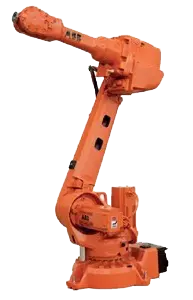Robot Repeatability vs. Accuracy
Robot repeatability is one of the main characteristics that is often referenced for industrial robots. However, many may not understand what this term means and its importance for robot operation. Repeatability is also commonly confused and interchanged with robot accuracy. They both measure characteristics of a robot that impact its effectiveness for performing specific tasks, but these measurements are different from one another.
Robot repeatability is defined as the ability of a robot to return to the same programmed position again and again. Repeatability can also be referred to a precision in the robotic world. Industrial robot repeatability varies from model to model, but most fall within a range of +/- 0.02 mm to +/- 0.4 mm. This number refers to the margin of error for the robot’s precision. If a robot has a repeatability of +/- 0.2 mm this means its motions will fall within 0.2 mm of its programmed position for a specific task. The lower the number the higher the repeatability of the robot. The FANUC Lr Mate 200id/7L and the FANUC M-20ia are two examples of industrial robots with high levels of repeatability.
Accuracy, on the other hand, measures the error or the difference between the desired outcome and the outcome that actually took place. In other words, accuracy measures how often a robot meets its intended target.
If a ABB IRB 4600-45/2.05 is programmed to pick parts from a box and place them onto a conveyor, its repeatability measures its ability to perform the programmed positioning for this task over and over. Its accuracy measures how many times the ABB IRB 4600 is able to successfully place the parts onto the conveyor (its target) versus missing the conveyor and having the part land on the floor. If the ABB 4600 were to consistently place the parts on the conveyor then its repeatability and accuracy would both be considered high which is the ideal standard and crucial when automating with robots.
The more precise a robot is with its positioning the more accurate it will be. The repeatability of industrial robots has significantly improved over the years reducing the margin of error for accuracy. Robot repeatability is achieved when the main components of an industrial robot operate together. These include the controller, motors, gears, and axes. The gears of a robot’s joints play the biggest roll when it comes to determining a robot’s precision. Robot’s with small and rigid gearboxes typically have a lower margin of error. This is why the Motoman MH6 is considered one of the most precise and accurate industrial robots.
Repeatability and accuracy are key for determining how successful a robotic application will be. Advancements in the technology of robotic vision systems and robotic force sensors has helped to improve the precision of industrial robots. Industrial robots have advanced from performing simple processes to more complex and detailed oriented ones because of their enhanced repeatability and accuracy. Many manufacturers now rely on them for their production processes because they have become more reliable than humans, one of the many benefits of automating with robots.




